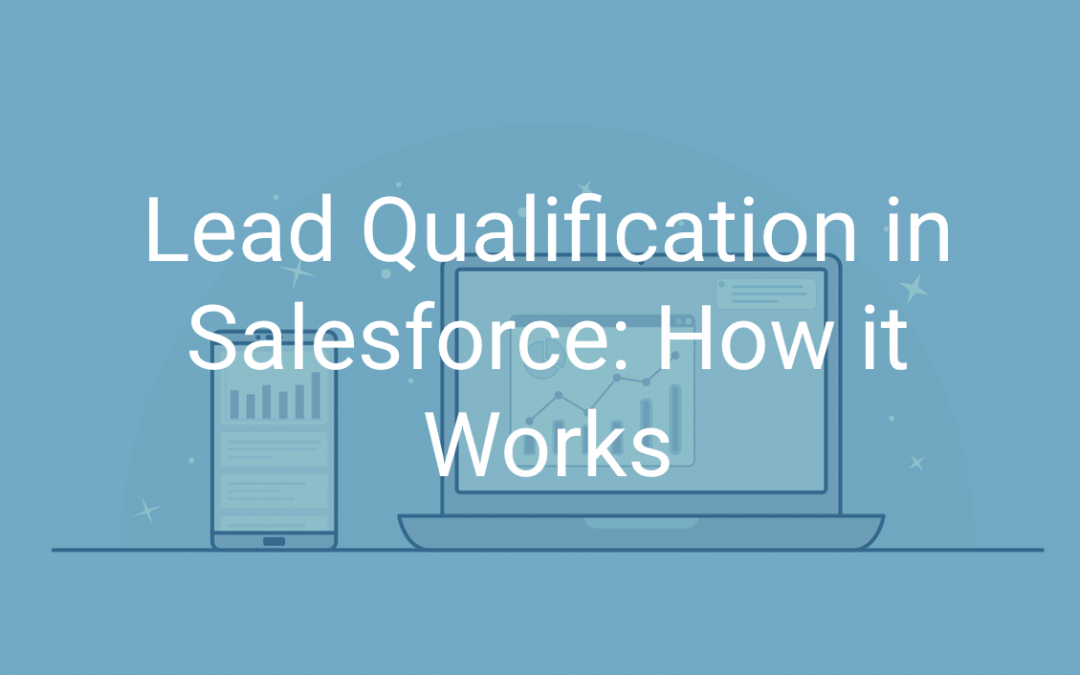Selling products to invested customers can be challenging for salespeople no matter their experience level, which makes following up with leads who aren’t actually interested a complete waste of your salespeoples’ time. This is the key reason why Lead Qualification is so important to your business.
What is Lead Qualification?
Lead Qualification is the process of tracking prospect behavior to determine whether or not those who engage with your website and marketing content are likely to buy. While there are many factors that influence a potential buyer’s decision, Lead Qualification is a great way to ensure that salespeople are only spending their time selling to could-be customers.
The Lead Qualification process can vary from business to business, as certain companies value different attributes and key actions to score and grade their leads. In this blog, we will go over how to ensure your Lead Qualification process is as effective as possible to increase efficiency and win rates for your teams.
Before we continue, it’s important to understand that there are two primary ways that Salesforce qualifies leads: Lead Scoring and Prospect Grading. We’ll explain each and then discuss how they work together to rank and prioritize leads
Establishing your Lead Qualification scoring system
Lead scoring in principle is pretty simple. If a lead takes a key action across your digital channels, you would want to track that action. When a lead has taken many key actions as they interact with your brand, you want all those micro-actions to roll up into an overall macro-score that would indicate they are ready to speak to sales rep.
Before you can begin scoring leads, you must create a scoring system that makes sense for your business. This will take some time to optimize, but it begins with identifying the key actions you want your prospects to take before having sales reach out. A great place to start is to look at your existing customers to understand your buyer’s journey better.
After identifying what to score, you must then assign point values to those attributes. Many companies often forget that some activities can give negative points or disqualify leads completely, like accessing a “jobs” portal on your website, as this likely indicates interest in applying for a job and not buying.
Grading is the second piece of lead qualification. It is important to understand the distinction between scoring and grading. Scoring is the point value given to individual activities leads perform on your website (things like filling out forms, going on contact pages, and scheduling meetings). Grading is a letter value given to leads based on their attributes, such as their position within the company, company size, location, industry, etc. Possessing key attributes will result in a higher grade given to a prospect, allowing sales reps to see at a glance that they should probably prioritize that lead over those with lower grades.
Say for example that many of your top leads that converted into customers share a common role at their respective organizations. This could indicate that particular role should be graded highly within your Lead Qualification process.
With an initial scoring and grading system in place (and don’t worry, you can and probably should modify this over time), you’re ready to leverage Salesforce automation to get your Lead Qualification system up and running.
Lead Qualification in Salesforce
After your scoring and grading scale is ready, you need to configure your Lead Qualification process within Salesforce’s automation tools. With Marketing Cloud Account Engagement (formerly known as Pardot), you can create automation that will automatically score prospective leads while on your website.
For example, you could create an automation that gives a lead 50 points when they download a case study on your website. Once all of your measured actions are automated, Salesforce will automatically score all prospective leads from your website so that your marketing team can screen and contact qualified leads as soon as possible.
How Strong CRM can help
Establishing a Lead Qualification model and automation system that is both effective and scalable can be a daunting task for businesses, especially start-ups who still need to figure out what qualification actions they want to measure.
Strong CRM combines Salesforce expertise with sales strategy to help businesses stay competitive. By evaluating what automation and customizations will produce the most accurate scores, Strong CRM has worked with all types and sizes of companies to grow their pipeline, boost opportunity win rates and increase the effective output of Sales and Marketing teams.
A strong Lead Qualification process is a key factor in improving your sales-marketing alignment, a cornerstone of a healthy growing business. Alignment affects every aspect of your sales pipeline and it begins at lead qualification, so receiving help from a professional consultant like Strong CRM is a worthwhile investment.
Conclusion
Lead Qualification is a process that requires time and continual effort, but maintaining a good system is always worth it. Think of your Lead Qualification like a bouncer at an establishment — without one, you may be overrun by leads that are not beneficial to your business.
Lead Qualification results in a stronger sales pipeline, and if your business can identify and engage more qualified leads, you will scale your revenue growth faster than you could otherwise.
Did you know that engaging a lead within an hour of their initial contact means you are nearly seven times more likely to qualify them than if you had contacted them after 2 hours, and almost 60 times as likely to qualify them if you had waited 24 hours or more?
To learn more about how Strong CRM can help you master your Lead Qualification process, contact us.

